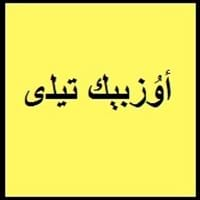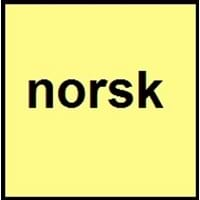Uzbek vs Norwegian
Countries
Turkey, Uzbekistan
Norway
National Language
Afganistan, China, Kazakhstan, Kyrgyzstan, Russia, Tajikistan, Turkmenistan, Uzbekistan
Norway
Second Language
Not spoken in any of the countries
Not spoken in any of the countries
Speaking Continents
Middle East
Europe, South America
Minority Language
Not spoken in any of the countries
Nynorsk
Regulated By
Not Available
Norwegian Language Council
Interesting Facts
- Uzbek is officially written in the Latin script, but many people still use Cyrillic script.
- In Uzbek language, there are many loanwords from Russian, Arabic and Persian.
- Bergen is one of the Norwegian dialect which has only two genders: common and neuter.
- Since Norwegian language uses pitch accents, it has musical quality and are sometimes employed to distinguish the meanings of homonyms.
Similar To
Kazakh and Uyghur Languages
Swedish and Danish Languages
Derived From
Not Available
Not Available
Alphabets in
Uzbek-Alphabets.jpg#200
Norwegian-Alphabets.jpg#200
Scripts
Arabic, Cyrillic, Latin
Latin
Writing Direction
Not Available
Left-To-Right, Horizontal
How Are You?
Qalay siz?
hvordan har du det?
Good Night
Hayirli tun
god natt
Good Evening
Hayirli kech
god kveld
Good Afternoon
Hayirli kun
god ettermiddag
Good Morning
Hayirli tong
god morgen
Please
Iltimos
Vær så snill
Sorry
Kechiring!
unnskyld
I Love You
Sizni sevaman
Jeg Elsker Deg
Excuse Me
Iltimos! Menga qarang
unnskyld meg
Dialect 1
Tashkent
Jamtlandic
Where They Speak
Not Available
Jamtland,Harjedalen
How Many People Speak
Not Available
Dialect 2
Afghan
Sognamål
Where They Speak
Not Available
Sogn
Dialect 3
Ferghana
Hallingmål-Valdris
Where They Speak
Not Available
Hallingdal, Valdres
Speaking Population
Not Available
Native Name
أۇزبېك ﺗﻴﻠی o'zbek tili ўзбек тили (o‘zbek tili)
Norsk
Alternative Names
Annamese, Ching, Gin, Jing, Kinh, Viet
Norsk
French Name
ouszbek
norvégien nynorsk; nynorsk, norvégien
German Name
Usbekisch
Nynorsk
Pronunciation
Not Available
[nɔʂk] (Eastern Norwegian)
[nɔʁsk] (Western Norwegian)
Ethnicity
Uzbek
Norwegians
Origin
9th–12th centuries AD
c. 1300 AD
Language Family
Turkic Family
Indo-European Family
Branch
Southestern(Chagatai)
Northern (Scandinavian)
Early Forms
Chagatay
Old Norse language, Old Norwegian, Middle Norwegian, Modern Norwegian
Standard Forms
Uzbek
Nynorsk, Bokmål
Language Position
Not Available
Signed Forms
Not Available
Signed Norwegian
Scope
Macrolanguage
Macrolanguage
ISO 639 6
Not Available
Not Available
Glottocode
uzbe1247
norw1258
Linguasphere
No data available
52-AAA-ba to -be; 52-AAA-cf to -cg
Language Type
Living
Living
Language Linguistic Typology
Not Available
Subject-Verb-Object
Language Morphological Typology
Not Available
Fusional
Uzbek and Norwegian Language History
Comparison of Uzbek vs Norwegian language history gives us differences between origin of Uzbek and Norwegian language. History of Uzbek language states that this language originated in 9th–12th centuries AD whereas history of Norwegian language states that this language originated in c. 1300 AD. Family of the language also forms a part of history of that language. More on language families of these languages can be found out on Uzbek and Norwegian Language History.
Uzbek and Norwegian Greetings
People around the world use different languages to interact with each other. Even if we cannot communicate fluently in any language, it will always be beneficial to know about some of the common greetings or phrases from that language. This is where Uzbek and Norwegian greetings helps you to understand basic phrases in Uzbek and Norwegian language. Uzbek word for "Hello" is Salom or Norwegian word for "Thank You" is takk. Find more of such common Uzbek Greetings and Norwegian Greetings. These greetings will help you to be more confident when conversing with natives that speak these languages.
Uzbek vs Norwegian Difficulty
The Uzbek vs Norwegian difficulty level basically depends on the number of Uzbek Alphabets and Norwegian Alphabets. Also the number of vowels and consonants in the language plays an important role in deciding the difficulty level of that language. The important points to be considered when we compare Uzbek and Norwegian are the origin, speaking countries, language family, different greetings, speaking population of these languages. Want to know in Uzbek and Norwegian, which language is harder to learn? Time required to learn Uzbek is 44 weeks while to learn Norwegian time required is 24 weeks.





